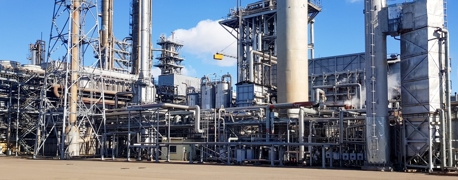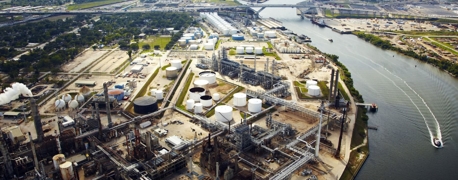4 Safety Processes Every Power Plant Must Use (And How Often)

An industrial plant is a complex and often high-risk place to work. The companies that operate these plants are responsible for prioritizing the safety of the processes and equipment used to minimize or eliminate the risks that their workers are exposed to.
These four safety processes are among the most common steps that companies must take to protect their employees. Should they be rushed or skipped altogether, plant accidents are not only more likely to occur, but they are also more likely to destroy property, injure industrial workers, or even put their lives at risk.
Management of Change (MOC)
Especially in workplaces that have complex processes that must be followed to the letter and are often updated, such as power plants, a Management of Change process must be completed each time to ensure a safe transition.
A company’s Management of Change system may differ based on its unique needs and the complexity of its processes. Software has largely taken over compared to the older ways of doing things with paper tracking, which allows companies to standardize their decision-making processes and even use automated notifications to diminish the possibility of missing a step.
The typical MOC process is as follows:
- Recognize the proposed change(s)
- Evaluate the associated risks
- Determine if the risks can be mitigated
- Decide if the change(s) should be made
- Implement the change(s)
- Conduct the Pre-Startup Safety Review (PSSR)
- Train workers on the change(s)
Another way to approach an MOC is with three phases:
- Prepare approach
- Manage change
- Sustain outcomes
Process Hazard Analysis (PHA)
According to OSHA’s definition, a Process Hazard Analysis (PHA) is “a systematic effort designed to identify and analyze hazards associated with the processing or handling of highly hazardous materials.” Whether or not a PHA is required depends on local, regional, and national guidelines. It’s especially important when industrial processes involving hazardous materials are implemented, as well as throughout the maintenance of or updates to those processes.
The team in charge of implementing the study must go through three basic steps:
- Identify the hazard(s)
- Evaluate the consequences
- Control the hazard(s)
A PHA is a study of process hazards that may include methods such as hazard and operability analysis (HAZOP), what-if analysis, “bowtie” analysis, fault-tree analysis (FTA), and failure mode and effect analysis (FMEA).
HAZOP is a structured and systematic technique made up of four steps:
- Form a HAZOP team
- Identify elements
- Consider possible variations of those elements
- Identify hazards or failing points within those elements
A what-if session, true to its name, leads team members through a series of what-if questions that address and evaluate hazards. The end result of this process includes a list of the potential severity and likelihood of these hazards and their consequences.
A bowtie analysis presents a visual layout of potential risk exposure as well as possible scenarios and appropriate barriers for that risk.
A fault-tree analysis (FTA) lists potential failed outcomes and works backward to identify causes.
A failure mode and effect analysis (FMEA) first identifies “failure modes,” showing how an operation is expected to play out should specific failures occur. An effects analysis follows to showcase outcomes for each failure mode.
Pre-Startup Safety Review (PSSR)
An integral part of any change to a process managed with an MOC, such as introducing a hazardous chemical, a Pre-Startup Safety Review is required to confirm the safety of the added element. Additionally, any deficiencies discovered during the PSSR process must be addressed and remedied before the new element is commissioned.
A typical PSSR checklist used at a power plant might include these questions:
- Have all personnel received adequate training on the new equipment and procedures?
- Has the proper personal protective equipment (PPE) been specified and provided?
- Is the training documented?
- Has the equipment been sufficiently isolated electrically and/or mechanically?
- Are the isolation points clearly marked?
- Have dangers been identified and remedied and/or clearly marked?
- Are all work permit procedures in place?
OSHA implemented regulations for the PSSR process in 1992 as part of the process safety management (PSM) program. 29 Code of Federal Regulations (CFR) 1910.119(i) explains the need for a PSSR: “The employer shall perform a pre-startup safety review for new facilities and for modified facilities when the modification is significant enough to require a change in the process safety information.”
2005 BP Texas City Refinery Explosions
The importance of using a PSSR correctly cannot be understated, although many companies may try to skip this step to save time and money. That’s what happened at a refinery in Texas; on a March afternoon in 2005, improper use of the PSSR process turned deadly at the BP Texas City refinery. 180 injuries and 15 deaths were reported as a result of a series of explosions that occurred while a hydrocarbon isomerization unit was being restarted. Because the PSSR was not utilized properly, the tower was flooded with hydrocarbons and overpressurized. Investigations performed by the U.S. Chemical Safety Board (CSB) discovered an inoperative pressure control valve, a broken high-level alarm, and a sightglass level transmitter that had never been calibrated. Each of these dangerous issues would have been caught in a PSSR.
Piping & Instrumentation Diagrams (P&IDs)
A detailed diagram designed to explain the inner workings of a physical process flow, a Piping & Instrumentation Diagram (P&ID) is a keystone document, foundational in both the design of new systems as well as their proper implementation and use. A typical P&ID shows all piping and related components, explaining the “physical sequence of branches, reducers, valves, equipment, instrumentation, and control interlocks.”
Typically created by engineers in the design process of a power plant and used as a reference for maintaining plant safety as part of the process safety management (PSM) program presented by OSHA, P&IDs are integral to the proper training of workers and their safe operation of the instrumentation.
Items typically found in these diagrams are as follows:
- Instrumentation and designations
- Valves and identifications
- Process piping, sizes, and identification
- Flow directions
- Start-up and flush lines
- Vents and drains
- Special fittings and sampling lines
- Reducers, increasers, and swaggers
- Interconnections references
Due to the complexity of P&IDs, each of these items is designated with various symbols that are defined on separate “lead sheets,” also known as “legend sheets.” These sheets are often customized for each company’s process on top of the standardized symbols that are used throughout the industry.
To prevent any misunderstanding at crucial decision-making times, a numeric-only system is recommended for tagging equipment. By using numbers rather than abbreviated names, there are fewer chances of misinterpretation when it matters the most. The format of this numeric-only system should consist of three numbers: an area number, an equipment type code, and a unique sequence number.
It’s also important to note that P&IDs are not always drawn to scale, and therefore cannot be entirely relied upon as an exhaustive representation of a process or plant design. Because the end goal of a P&ID is clarity, these diagrams must be used in conjunction with support documents that further explain the use and layout, as well as get into the details of specifications.
Examples of P&ID support documents include:
- Process flow drawings (PFD)
- Piping material specifications (PMS)
- Equipment and instrumentation specifications (EIS)
- Functional Requirement Specification (FRS)
Prioritizing Safety at Power Plants & Beyond
While some of these safety processes may be customized to the specific company or plant, the overall goal is the same: to promote the safe operation of the industrial plant. Companies must follow steps like these to ensure their workers are properly trained for and protected from potential risks in the workplace.
- Categories


